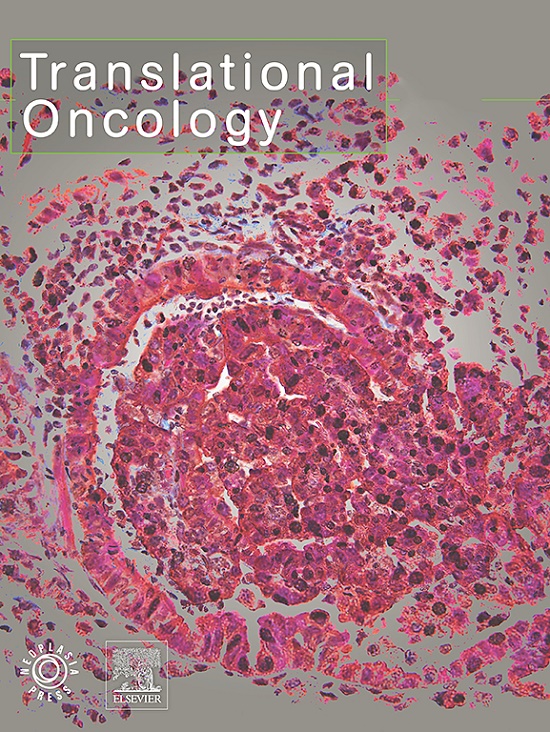针对晚期眼表癌和眼睑癌的新型综合疗法--手术和高剂量率介入放射治疗(近距离放疗)。
IF 5
2区 医学
Q2 Medicine
引用次数: 0
摘要
目的:评估晚期眼表鳞状肿瘤(OSSN)和眼睑肿瘤的临床病理特征以及术后高剂量率(HDR)介入放射治疗(IRT-近距离放射治疗)的疗效:方法:19 名患有晚期眼表恶性肿瘤(分期≥ T2)和眼睑恶性肿瘤(分期≥ T3)的患者入选。经多学科讨论后,患者在手术后接受 HDR-IRT 治疗。在我们的系列研究中,总剂量为 49 Gy,分 14 次进行,每次 3.5 Gy,每天 2 次。局部疾病控制是研究的主要结果。死亡率、总生存率、无病生存率和毒性是次要结果:结果:4例观察到局部复发,其中2例为结膜黑色素瘤,2例为结膜鳞状细胞癌。中位生存期为 56.3 个月。12、24和36个月的生存率分别为100.00%(IQR:100.00% - 100.00%)、100.00%(IQR:100.00% - 100.00%)、100.00%(IQR:100.00% - 100.00%)。中位生存期为 56.3 个月。12、24和36个月的疾病生存率分别为85.71%(IQR:69.21% - 100.00%)、68.57%(IQR:42.11% - 100.00%)、68.57%(IQR:42.11% - 100.00%)。眼睑肿瘤的主要副作用是眩晕和眼睑异常,OSSN的主要副作用是干眼症状:结论:术后 HDR-IRT 对晚期眼睑癌的控制有效。结论:术后 HDR-IRT 能有效控制晚期眼睑癌,但要有效治疗晚期 OSSN,尤其是结膜黑色素瘤,似乎更具挑战性。需要进行多中心研究,以获得更多的患者样本,并评估不同组织学和T型肿瘤的不同放疗剂量。本文章由计算机程序翻译,如有差异,请以英文原文为准。
New combined treatments, surgery and high-dose-rate interventional radiotherapy (brachytherapy), in advanced ocular surface and eyelid cancers
Purpose
To evaluate the clinicopathological characteristics and the effectiveness of post-operative high-dose-rate (HDR) interventional radiotherapy (IRT - brachytherapy) in managing advanced ocular surface squamous neoplasia (OSSN) and eyelid tumors.
Methods
Nineteen patients with advanced malignancies affecting the ocular surface (stage ≥ T2) and eyelids (staging ≥ T3) were enrolled. Post-operative HDR-IRT treatment followed surgery after multidisciplinary discussion. In our series a total dose of 49 Gy was administered in 14 fractions of 3.5 Gy each, 2 doses per day. Local disease control is the study's main outcome. Death rate, total survival, disease-free survival, and toxicity are secondary outcomes.
Results
Local recurrence was observed in 4 cases, 2 were conjunctival melanomas and 2 were conjunctival squamous cell carcinoma. The median OS was 56.3 months. The 12, 24 and 36 months survival rate was respectively 100.00% (IQR: 100.00% - 100.00%), 100.00% (IQR: 100.00% - 100.00%), 100.00% (IQR: 100.00% - 100.00%) respectively . The median DFS was 56.3 months. The 12, 24 and 36 months disease survival rate was respectively 85.71% (IQR: 69.21% - 100.00%), 68.57% (IQR: 42.11% - 100.00%), 68.57% (IQR: 42.11% - 100.00%) respectively. In eyelid tumors, madarosis and eyelid abnormalities are the main side effects, while in OSSNs, dry eye symptoms are frequently reported.
Conclusion
Postoperative HDR-IRT has been effective in advanced eyelid cancers control. More challenging appears instead an effective treatment of advanced OSSNs, particularly conjunctival melanomas. Multicenter studies are needed to get a larger patient sample and to evaluate different radiotherapy dosages by different histologic and T types of tumors.
求助全文
通过发布文献求助,成功后即可免费获取论文全文。
去求助
来源期刊

Translational Oncology
ONCOLOGY-
CiteScore
8.40
自引率
2.00%
发文量
314
审稿时长
54 days
期刊介绍:
Translational Oncology publishes the results of novel research investigations which bridge the laboratory and clinical settings including risk assessment, cellular and molecular characterization, prevention, detection, diagnosis and treatment of human cancers with the overall goal of improving the clinical care of oncology patients. Translational Oncology will publish laboratory studies of novel therapeutic interventions as well as clinical trials which evaluate new treatment paradigms for cancer. Peer reviewed manuscript types include Original Reports, Reviews and Editorials.
 求助内容:
求助内容: 应助结果提醒方式:
应助结果提醒方式:


